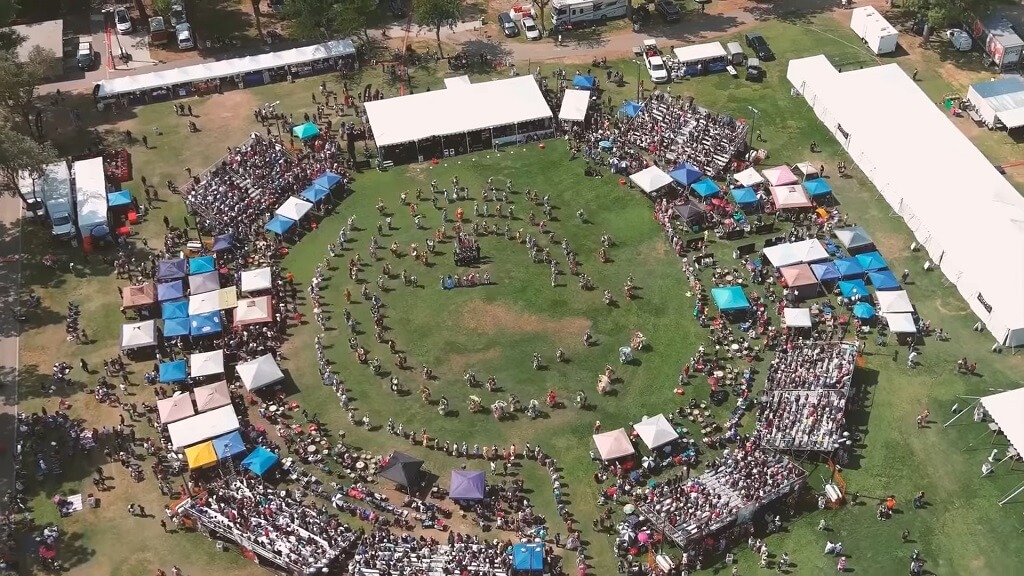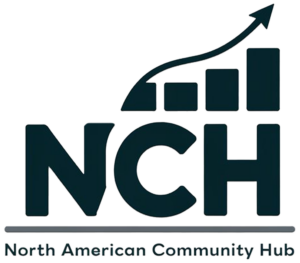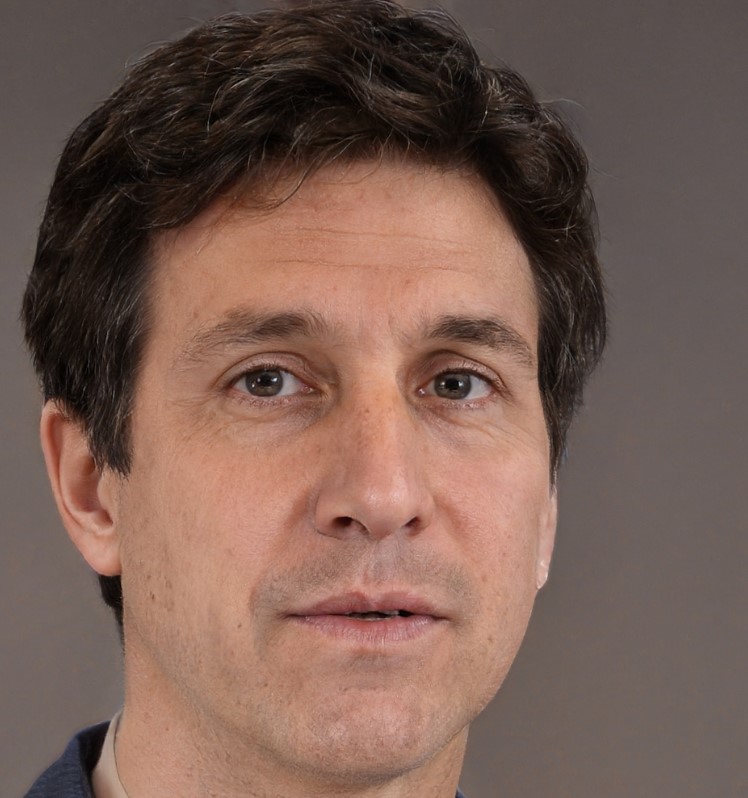Yuhaaviatam of San Manuel Nation restored an ancestral Serrano name to public use in 2024. The name means People of the Pines and points to the San Bernardino mountain homeland.
The community survived mission removal, nineteenth-century violence, and the reservation era that began in 1891.
Bloodline behind the name runs through loss, regrouping, and years of pushing back toward stability.
A small mountain reservation later grew into a nation with strong cultural life and serious economic reach, built by choices made inside the community.
The following sections will share more insights about the interesting history of this tribe.
Let’s Start With the History of the Tribe
Yuhaaviatam of San Manuel Nation history starts long before the reservation or the modern gaming era.
Story sits in Serrano mountain homelands, then moves through colonization, violence, and survival, and ends with a community that held together long enough to rebuild on its own terms.
Serrano Roots in The San Bernardino Mountains

Yuhaaviatam of San Manuel Nation comes from the Serrano people, also called Maara’yam.
For generations, Serrano families lived in the San Bernardino Mountains, nearby valleys, and the high desert.
People moved between elevations for food and weather, gathering pinyon pine nuts, acorns, seeds, and desert plants, and hunting small game.
Trade linked Serrano villages with neighboring nations such as Cahuilla and Tongva, so the mountains connected into a wider Southern California Native network.
Name Yuhaaviatam means People of the Pines. It points to pine forests that fed Serrano communities and shaped identity long before any modern borders.
Spanish Missions and The First Major Rupture
Spanish colonization reached the Serrano territory through the mission system.
Missions meant forced relocation, pressure to abandon language and ceremony, and outbreaks of disease that hit mountain communities hard.
Many Serrano people were taken from villages and folded into mission life under outside rule.
Later federal and state labels like “Mission Indians” grew from that period, but those labels never captured what happened on the ground for Serrano families.
19th Century Violence and Displacement
After Mexican rule and then US control of California, settlement pushed deeper into Serrano homelands.
The gold rush and ranching expansion brought miners and militias into the San Bernardino range. Violence followed.
Yuhaaviatam community history describes assaults in the Big Bear Valley area that killed many people and scattered survivors.
Those survivors regrouped in the mountains and foothills, carrying family lines and cultural memory forward during one of the most dangerous periods in the region.
San Manuel Reservation, 1891
In 1891, the United States established the San Manuel Reservation in San Bernardino County.
Reservation name honored Paakuma, recorded in Spanish sources as Santos Manuel, a leader remembered for guiding survivors through displacement and into the reservation era.
Land set aside for the community was small and not well-suited for farming, so early reservation life depended on wage labor, craftwork, and tight mutual support.
Holding on Through the 20th Century
Federal assimilation policies and boarding schools disrupted the Serrano language and tradition well into the twentieth century.
Even with those pressures, cultural life did not vanish. Families kept oral history, land knowledge, and ceremonial practice alive in private and in community settings, which later gave younger generations a base for cultural revival.
Name Restoration in 2024
For more than a century, federal paperwork used “San Manuel Band of Mission Indians.”
In 2024, the nation restored the ancestral name Yuhaaviatam of San Manuel Nation.
Leaders described the change as a return to the Serrano language and a clearer public statement of identity tied to homeland and history.
Culture and Maara’yam Language Today
Cultural work in Yuhaaviatam of San Manuel Nation follows a clear plan: rebuild Maara’yam language, teach culture through youth and family programs, keep public gatherings strong, and tie tradition to specific plants, places, and stories.
Maara’yam Language Revival
Maara’yam is the Serrano language of the nation.
After the mission and boarding school eras, fluent speakers declined to a small number, so language rebuilding became a priority project.
- The Serrano Language Revitalization Project runs inside the national education and culture structure. Work includes elder recordings, vocabulary building, and classes aimed at turning learners into everyday speakers.
- College-level teaching with CSUSB: California State University in San Bernardino developed a recurring Serrano language course sequence, co-taught with a Serrano elder and program staff. CSUSB describes it as a first for public higher education in California, offering American Indian language courses within the standard university curriculum.
Powwow and Public Gatherings

Public gatherings keep the traditional Serrano practice visible for citizens and visitors.
- San Manuel Powwow runs over three days with drum groups, dance competitions, vendors, and intertribal participation. The event is one of the largest cultural gatherings hosted by the nation and serves as a teaching space for youth who grow up inside powwow protocol.
- “The Yuhaaviatam Story” presentations travel to regional colleges and community venues. A July 2025 event at Barstow Community College, led by a council culture seat member, focused on Maara’yam lands and Serrano history for a public audience.
Also, Hamiinat Magazine is published by the nation and centers on Yuhaaviatam history, culture, and community reporting. Issues circulate publicly and are often tied to powwow season and community milestones.
Many other events also show the culture of this nation. The interesting fact is how most of them show the strong ties of this tribe with nature.
For example, “The Garden” project uses augmented reality public art to highlight culturally important plants and Maara’yam stories in regional public spaces, including San Bernardino and Ontario.
The project shows a direct line between Serrano plant knowledge and present-day public education tools.
How Yuhaaviatam of San Manuel Nation Is Governed Now
Yuhaaviatam of San Manuel Nation runs a modern tribal government built on federal recognition and a constitution-based, elected leadership system.
Citizens elect a Tribal Council that sets policy, oversees budget and programs, and represents the nation in government-to-government relations with the United States, California, and local agencies.
Administrative work is carried out through tribal departments and enterprise authorities that handle services, culture, education, health, and business operations.
| Part Of Government | What It Does | Why It is Important |
| Tribal Council | Elected leadership body that passes laws, approves budgets, negotiates with outside governments, and sets direction for services and enterprises. | Keeps decision making in hands of citizens and provides political sovereignty in practice. |
| Chairperson And Officers | Lead council meetings, act as primary public representatives, and coordinate major policy priorities. | Gives the nation a clear voice in regional and national matters. |
| Tribal Administration Departments | Run community programs like education support, health services, housing, elder care, youth programs, and cultural work. | Turns policy into daily services that raise quality of life and protect culture. |
| San Manuel Entertainment Authority (SMEA) | Manages on reservation gaming and hospitality operations tied to Yaamava. | Allows professional business management while keeping ownership under the nation. |
| San Manuel Gaming And Hospitality Authority (SMGHA) | Handles off reservation gaming and hospitality investments, including Palms in Las Vegas. | Enables expansion into new markets without shifting political governance into business management. |
| Citizen Engagement | Voting, community meetings, cultural participation, and oversight through tribal processes. | Keeps leaders accountable to citizen priorities rather than outside pressure. |
Government priorities show up in areas citizens talk about most: scholarships and school support, health care access, cultural renewal, youth programs, elder services, housing, and jobs created through enterprises.
Public reporting and philanthropy also flow from governance decisions, since the Tribal Council approves major giving and partnership direction.
Yuhaaviatam of San Manuel Nation In The Gaming Industry
Gaming for Yuhaaviatam of San Manuel Nation started small and local, then grew into the main driver of modern government services, jobs, and outside investment.
The story runs from a bingo hall in the 1980s to two headline properties today, one in Southern California and one in Las Vegas.
How Gaming Started
San Manuel Indian Bingo opened on July 24, 1986, on reservation land near Highland, California.
At the time, the reservation economy had few options, and unemployment was high.
High-stakes bingo brought in steady cash because the site sat close to a fast-growing Inland Empire population with limited gaming choices nearby.
During the 1990s, bingo expanded into a broader gaming floor with slot machines and card games.
Changes in California law during the late 1990s and 2000 allowed larger-scale tribal gaming, and San Manuel expanded again in step with those new compacts.
The Evolution Over Time
- 1986: San Manuel Indian Bingo opens.
- 1994: Expansion into a full gaming facility with slots and card games.
- 2000s: Multiple expansions add more machines, more floor space, and major dining and entertainment options.
- 2017: Bingo ends as the core business, and the property shifts fully toward slots and tables.
- 2021: Full rebrand to Yaamava’. Major hotel tower opens.
- 2022: A large on-site theater opens, adding a stronger concerts and live events lane.
What Yaamava Looks Like Today
Yaamava is one of the largest gaming operations in California. Public property descriptions list roughly:
- Around 290,000 square feet of gaming space
- Over 7,000 slot machines
- Roughly 150 table games
- High-limit rooms and private play areas
- A 17-story hotel tower with 432 rooms
- A large live-events theater with about 3,000 seats
They are also following the latest trends with the rise of online platforms. That way, you can play there from any region where it is legal. If you are interested in testing your luck, make sure to first read some useful tips in this article.
Expansion Outside California – Palms In Las Vegas

To handle growth beyond reservation land, the nation created a business authority focused on gaming and hospitality investments.
Through that arm, Yuhaaviatam bought Palms in Las Vegas in 2021 for about $650 million.
Nevada regulators approved the deal, and the property reopened under full tribal ownership in 2022.
The Palms deal was very important because a Native nation became the full owner and operator of a major Las Vegas property, something still rare in that market.
Where The Money Goes
Public sources do not give a full internal revenue breakdown, so no honest article should pretend otherwise. What is public and clear is how tribal gaming revenue is legally directed.
Federal gaming law allows net gaming revenue to be used for:
- tribal government operations and public programs
- general welfare of citizens
- economic development and new enterprises
- charitable giving
- local government support in the surrounding areas
- per-capita payments to citizens, done only under a federally approved plan
Yuhaaviatam has consistently described gaming revenue as funding public services, housing, health care, education support, cultural programs, and long-term investment planning. That same revenue stream also supports major regional philanthropy, including very large gifts to hospitals, universities, and community projects.
Per-capita payments may exist under standard federal rules, but the nation does not publish a public per-citizen figure. Under federal law, any such payments must follow an approved allocation plan and are taxable income for recipients.
What Gaming Changed In Concrete Terms
Before gaming, reservation life depended heavily on low-wage work and outside assistance. After gaming revenue grew, the nation gained the ability to fund:
- broad employment for citizens and non-citizens
- scholarships and long-term education support
- improved housing and infrastructure
- expanded health services for citizens
- cultural and language revitalization work
- investment growth outside reservation land
Las Vegas ownership, entertainment partnerships, and a widening business portfolio are all downstream effects of that base built in 1986.
Fun Facts And Surprising Details

1. Reservation land is larger than many people guess
Public profiles put the reservation area at a bit over 1,100 acres near Highland, which is sizable for a Southern California reservation created in the 1890s.
2. Another federally recognized Serrano nation sits nearby
Morongo Band of Mission Indians is the other Serrano government recognized by the United States, so Serrano political life today includes more than one nation.
3. Business growth now goes beyond gaming
In 2025, the nation’s business arm completed an acquisition of Waldorf Astoria Monarch Beach Resort and Club, a move into luxury coastal hospitality and a sign of a broader investment strategy.
4. Acorn harvest remains a living community practice
Nation news highlights a yearly acorn harvest gathering in late November, bringing citizens together around one of the oldest Serrano food traditions.
5. The workplace side keeps getting national recognition
Yuhaaviatam enterprises earned Great Place To Work certification for five straight years, a rare streak for a major Inland Empire employer.
6. A charity golf tournament has built a long track record
Updates in 2025 say the San Manuel Golf Tournament raised about $450,000 in that year alone and more than $4.5 million since the tournament started, turning a sports event into a steady funding stream for regional causes.
Bottom Line
Yuhaaviatam of San Manuel Nation made it through missions, mountain violence, and a long stretch on a small reservation, then turned survival into a working future.
Maara’yam language and cultural practice are growing again through steady community teaching, especially among youth.
Money from Yaamava and Palms now pays for health care, education, housing, jobs, and investment meant to hold up the next generation.
Long story short, People of the Pines are writing the next chapter the way they want it now.


